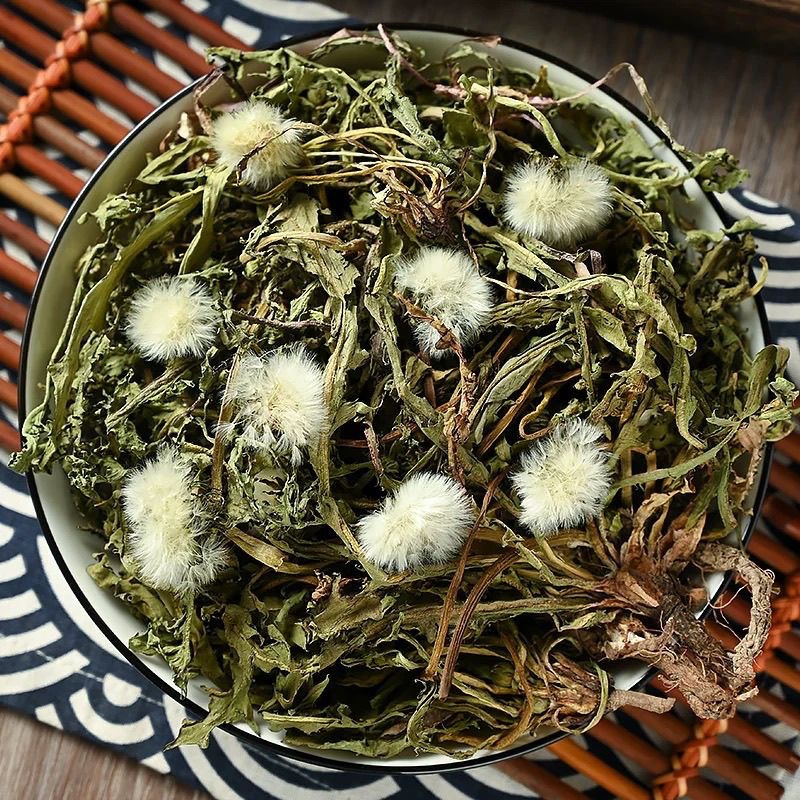
Whenever a wisp of spring breeze sweeps across the fields, those golden little flowers peek out, showcasing nature's simplest yet most impressive beauty. The dandelion—a plant often thought as a nuisance in modern horticulture—actually possesses astonishing nutritional value over the millennia of medicinal history. From its bright yellow flowers to its deep-buried roots, every part holds unique medicinal effects, making it a ultimate "all-rounder" gift to humankind. When we crouch down and take a closer look at this often-overlooked plant, we discover it is not just a remedy but a condensed chronicle of natural evolution.
The dandelion's vitality is nothing short of a botanical miracle. Its scientific name, Taraxacum, comes from Arabic, meaning "bitter herb," while its English name, "dandelion," derives from the French dent de lion ("lion's tooth"), vividly describing its serrated leaves. Its roots can penetrate hard soil, reaching up to three meters deep. Even if uprooted, a tiny remaining fragment can regenerate, thanks to the rich nutrients stored in its roots that allow it to thrive in harsh conditions. In medieval Europe, it was called "piss-a-bed" for its potent diuretic properties, while in Traditional Chinese Medicine, Li Shizhen (a prestigious Chinese medicine doctor) documented its heat-clearing and detoxifying effects in the Compendium of Materia Medica(a vital work in TCM).Remarkably, Eastern and Western medicine respectively recognized this wild plant's healing value—a rare cross-cultural consensus in the plant kingdom.
Those golden blossoms are more than just childhood playthings—they're nutritional treasures. Dandelion flowers are rich in flavonoids and antioxidants, with vitamin A levels 1.5 times higher than carrots and as well as astonishingly high levels in vitamin K. In culinary fields, these sunlit blooms can be made into sweet syrups, crystal-clear jellies, and even distinctive wines. Botanists have found that dandelion flowers follow an accurate clock, unfurling punctually at dawn and closing at dusk, sometimes even "playing hooky" on cloudy days. This phenomenon, called "nyctinasty," fascinated Darwin, who detailed it in The Power of Movement in Plants. Modern research suggests this rhythm helps regulate temperature, protect pollen, or optimize pollination timing—revealing the plant kingdom's precise timekeeping.
There is another thing that is also easily overlooked-----the value of dandelion roots. With autumn approching, the plant concentrates nutrients in its roots, making them plump and rich. Baked dandelion root emits a nutty, coffee-like aroma, offering a caffeine-free alternative. But its benefits go further—it's possessed inulin (a prebiotic fiber), bitter compounds, and antioxidants. Recent studies suggest dandelion root extract may aid digestion, regulate blood sugar, and even inhibit certain cancer cells. In 2012, researchers at Canada's University of Windsor found the extract of dandelion roots could trigger apoptosis in leukemia cells while sparing healthy ones—a discovery that, though requiring further validation, opens new avenues for adjunct cancer therapy. The bitter compound "taraxacin" stimulates bile production, aiding fat digestion—a scientific basis for its traditional use against indigestion.
Dandelion trivia forms a miniature museum of natural wonders. Did you know? A single plant of dandelion can produce up to 5,000 seeds, each parachute-equipped to ride winds for 8 kilometers. It's among the few self-pollinating plants, ensuring reproduction even without pollinators. Even rarer in botanical field, every part—flower, leaf, and root—is edible and nutritious. Botanists also discovered its "apomixis" ability: some species clone themselves by producing seeds without fertilization, explaining their rapid colonization. Another secret? The flower's golden color isn't from one pigment but a blend of carotenoids and flavonoids—a hue that attracts pollinators while filtering harmful UV rays, showcasing evolution's artistry.
In urban concrete jungles, dandelions offer a hidden a pproach to nature. The best harvest time is post-dawn when aromatic compounds peak. Fresh young leaves add a refreshing bite to salads; golden flower syrups infuse desserts with the smell of sunshine; baked root tea brings caffeine-free and comfort. These simple gifts remind us: health often lies beneath our feet. As French writer Alphonse Karr wrote, "Dandelions are spring's telegrams, announcing the earth's awakening." In nature's message, we might decode deeper wisdom—that extraordinary value hides in plain sight, and life's miracles thrive in overlooked corners. The dandelion tells us to see "weeds" anew, much like its deep roots quietly drawing nourishment and healing power from the neglected earth.
[Riddle]
Clad in golden armor, crowned with downy white,
I ride the wind to travel, then root without a sound.
In herbal lore I'm famed for cooling heat,
A coffee stand-in—what plant am I, so neat?
Answer: uoıןǝpuɐp(reverse pls)
Contact:
For market reports or sourcing inquiries:
Etan Zong
Email: Etan@bzjiahe.com
Website: www.bzjiahe.com







